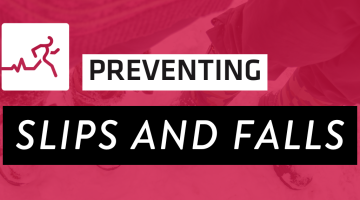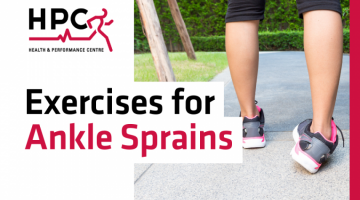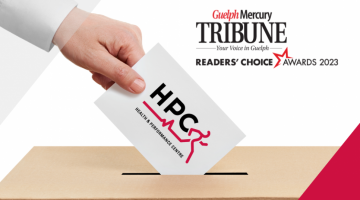What is Radiculopathy? | Guelph Physiotherapy

Radiculopathy is a condition where a nerve is pinched by the spine. It occurs when spinal nerve roots have become damaged or impinged as they exit the spinal column between each vertebra, and travel throughout the body.
What Causes Radiculopathy?
Radiculopathy is typically caused by changes in the bones, tendons, intervertebral discs, and muscles surrounding the nerve roots. These changes cause the tissue to tighten and narrow the pathway for the nerve roots, known as the intervertebral foramen (IVF).
The narrowing of the IVF is known as foraminal stenosis. The most common causes of radiculopathy are bone spurs and herniated disks which then narrow the IVF.
Signs and symptoms of Radiculopathy:
The signs and symptoms of radiculopathy include:
-
Sharp pain in the back, arms, legs, and shoulders. This pain may worsen during simple activities like coughing, sneezing, and breathing.
-
Weakness of the limbs
-
Decreased or loss of reflex in the limbs
-
Skin numbness
-
Pins and needles sensation in the limbs
-
Other abnormal sensations of the limbs
How is Radiculopathy Diagnosed?
Radiculopathy can be diagnosed by a doctor or other healthcare provider using a physical examination. This physical examination uses different physical tests to check the movements, muscle strength, and reflexes of the spine and associated limbs.
Medical imaging tests such as, X-ray, CT, and MRI may be used to confirm radiculopathy. In some cases, nerve condition studies known as electromyography, or EMG may be performed to help determine if there is any impedance to the nerve signal along the course of the nerves.
How is Radiculopathy Treated?
There are many treatment options for radiculopathy such as medication, weight management, physiotherapy, and steroid injections.
Medications are sometimes used to help treat and lessen the symptoms of radiculopathy. These include non-steroidal anti-inflammatory drugs (NSAIDs), pain relievers, and muscle relaxants.
Weight loss treatments may be recommended for those who are overweight, in hopes that the weight loss will reduce the pressure acting upon the nerve root and surrounding tissues.
In more severe cases, steroid injections are used to reduce inflammation and relieve pain. Generally, your doctor will recommend seeing a physiotherapist for further physical treatment in order to improve muscle strength and prevent further damage from occurring.
Therapy for Radiculopathy:
Physiotherapy and chiropractic treatments are both common conservative treatments for radiculopathy. During physiotherapy, any combination of manual therapy (MT), mild stretching, conditioning exercise, ergonomic programming, and therapeutic exercise will be used to treat radiculopathy. Comprehensive rehabilitation programs can also be beneficial and include postural training, muscle reactivation, strength deficits training, and correction of flexibility.
What is Manual Therapy (MT)?
MT is a technique in which a practitioner will use a device or their hands to apply a controlled movement to the joints in your spine. The amount of force used will vary depending on the goal of the technique and may vary from a gentle glide to a quick high velocity thrust manipulation. MT allows for the joints in your spine to regain mobility. MT is safe when performed by a trained and licensed practitioner, like your HPC physiotherapist.
What are the Risks/Benefits of Manual Therapy?
The benefits of MT include decreased back pain, reduced drug dependence, improved range of motion, and more. The most common side effects of MT are temporary muscle soreness, stiffness, and a temporary increase in pain. More serious risk factors include headaches, fatigue, and radiating discomfort.
To learn more about Radiculopathy and how our team of physiotherapists at HPC can help you on your road to injury recovery, book an appointment with us.
*About the HPC Student Volunteer Program*
Each year, approximately 30 University of Guelph students are selected following a competitive application process to take part in the “HPC Volunteer Program.” This program provides an opportunity for U of G student volunteers to translate their academic knowledge into practice, while gaining first-hand experience and mentorship from the team of certified physiotherapists and chiropractors at the University of Guelph’s Health and Performance Centre. As a result of this exceptional partnership between the University of Guelph and the HPC practitioners, students can gain valuable insight on evidence-based practice prior to graduating from their respective programs. Click here for more information on co-curricular experiential learning opportunities at the University of Guelph. This article was written by members of the 2021-22 HPC Student Volunteer Program.
References
Lumbar Radiculopathy. Physiopedia. (2021). https://www.physio-pedia.com/Lumbar_Radiculopathy.
Nielsen, S. M., Tarp, S., Christensen, R., Bliddal, H., Klokker, L., & Henriksen, M. (2017). The risk associated with spinal manipulation: an overview of reviews. Systematic reviews, 6(1), 64. https://doi.org/10.1186/s13643-017-0458-y
Radiculopathy. Johns Hopkins Medicine. (2021). https://www.hopkinsmedicine.org/health/conditionsand-
diseases/radiculopathy#:~:text=Radiculopathy%20describes%20a%20range%20of,%2C%20weakn ess%2C%20numbness%20and%20tingling.
Radiculopathy. Physiopedia. (2021). https://www.physio-pedia.com/Radiculopathy.
U.S. Department of Health and Human Services. (2021). Spinal Manipulation: What You Need To Know.
National Center for Complementary and Integrative Health. https://www.nccih.nih.gov/health/spinal-manipulation-what-you-need-to-know.
What are the benefits of spinal manipulation? - Meadowlands Physiotherapy. Meadowlands
Physiotherapy -. (2019, May 29). https://www.meadowlandsphysio.ca/2016/11/01/what-are-thebenefits-of-spinal-manipulation/#:~:text=Spinal%20manipulation%20is%20used%20as,Chronic.



